In http://www.fredosaurus.com/notes-cpp/arrayptr/array-diagrams.html website, it states that
Pointers hold the memory address of other data and are represented by a black disk with an arrow pointing to the data it references.
For example,
int a[5]; // Allocates memory for 5 ints.
. . .
a[0] = 1;
for (int i=1; i<5; i++) {
a[i] = a[i-1] * 2;
}
My question is how can I print the address of the pointer pointing to the array?
I know that &a or &a[0] gives us the address of the first element. But how can I access the pointer pointing the array?

